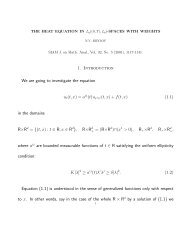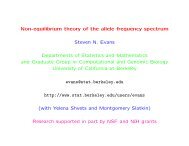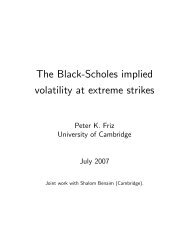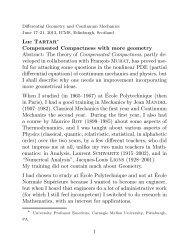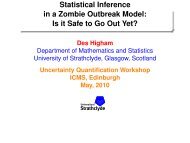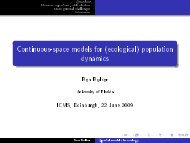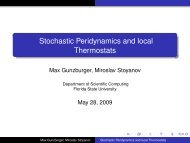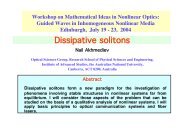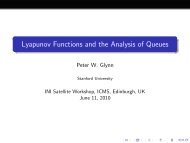A Mini-course on EllipticâHyperbolic Equations - ICMS
A Mini-course on EllipticâHyperbolic Equations - ICMS
A Mini-course on EllipticâHyperbolic Equations - ICMS
You also want an ePaper? Increase the reach of your titles
YUMPU automatically turns print PDFs into web optimized ePapers that Google loves.
Alternative definiti<strong>on</strong> of the can<strong>on</strong>ical forms:We can always write a sec<strong>on</strong>d-order linear equati<strong>on</strong> with smoothcoefficients defined in an open set of R 2 in the local formLu = K (x, y) u xx + u yy + lower-order terms.One can, by a further n<strong>on</strong>singular transformati<strong>on</strong>, arrive at acoordinate system in which the type-change functi<strong>on</strong> K (x, y) haseither of two forms:1. K(y), with K(0) = 0 and yK(y) > 0 for y ≠ 0, or2. K(x), with K(0) = 0 and xK(x) > 0 for x ≠ 0.The former characterizes equati<strong>on</strong>s of Tricomi type and the latter,equati<strong>on</strong>s of Keldysh type.Still more generally, <strong>on</strong>e notices that the distincti<strong>on</strong> is <strong>on</strong>lymeaningful in a neighborhood of the s<strong>on</strong>ic curve.




